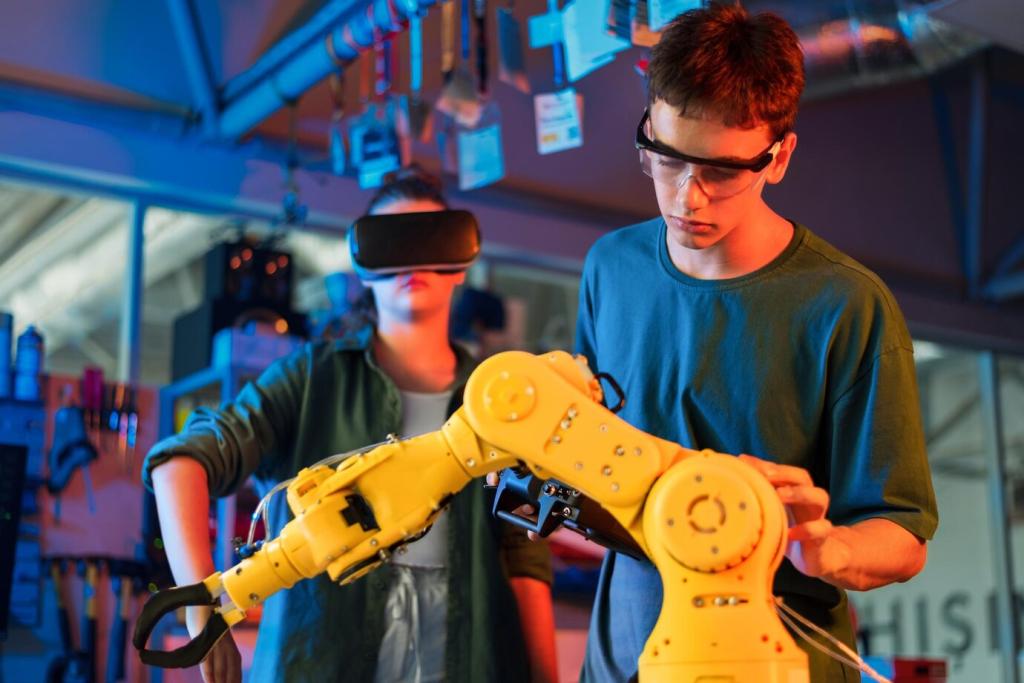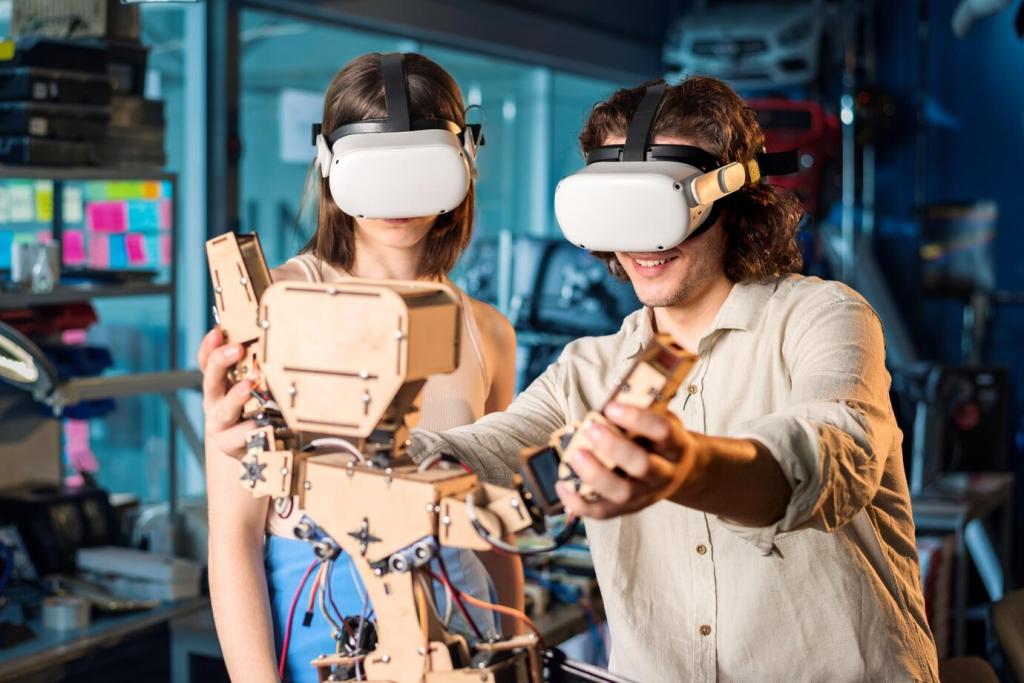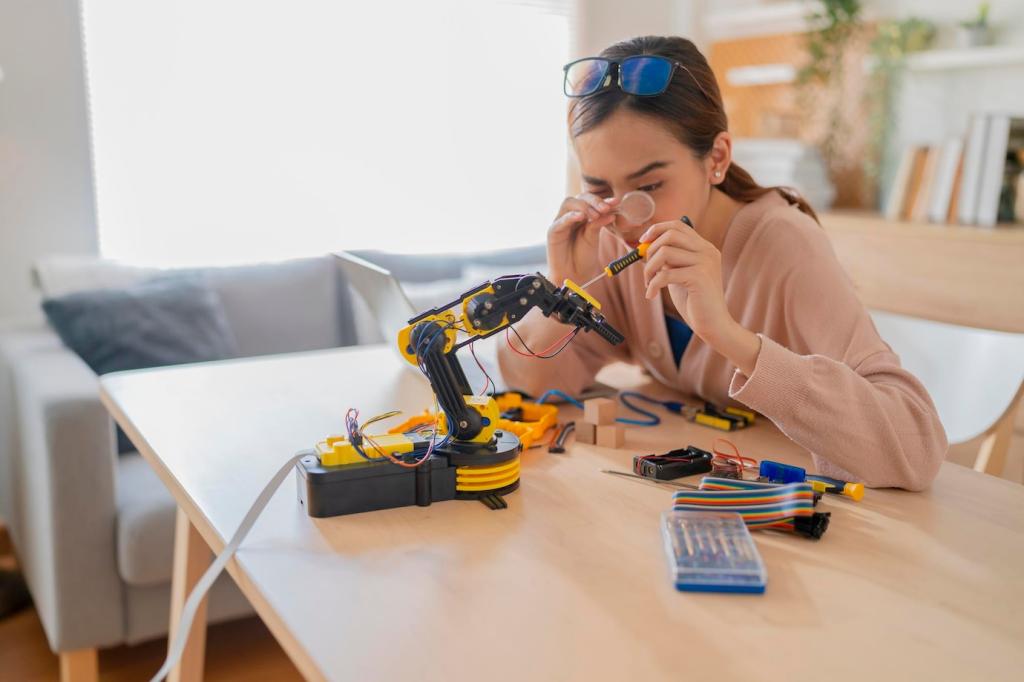Sensors and Interaction
Create a robot that follows a flashlight using two light sensors and simple compare logic. Children learn about thresholds and calibration by testing near windows and under lamps. Turn it into a hide-and-seek game across the floor. Discuss safe distances from hot bulbs, and celebrate when your robot confidently finds its favorite pool of light.
Sensors and Interaction
Attach a tiny microphone module to detect claps and trigger dance routines. Map clap counts to patterns—one clap spins, two claps wiggle. Build a playlist, add a silly hat, and host a living room show. Kids experiment with sensitivity settings, discovering how ambient noise influences performance, then proudly share crowd-pleasing choreographies in our community thread.





